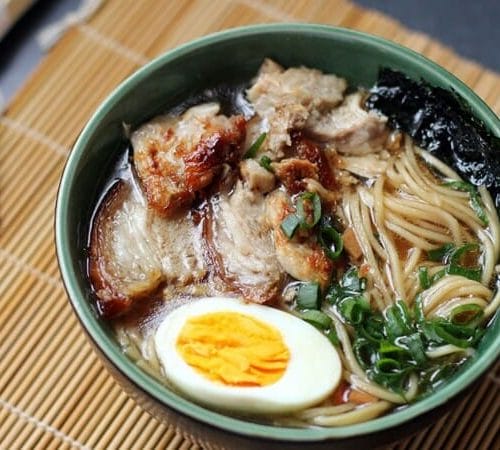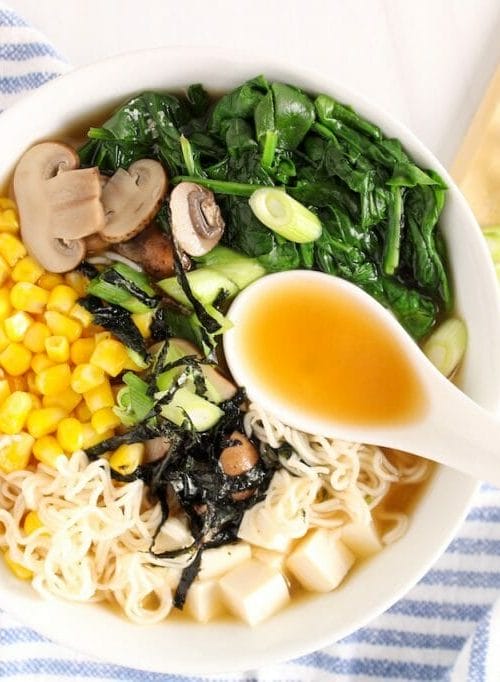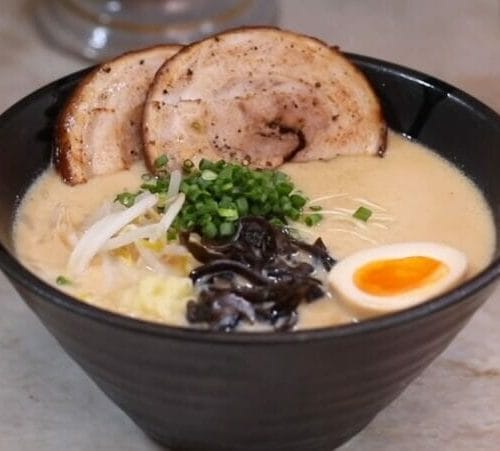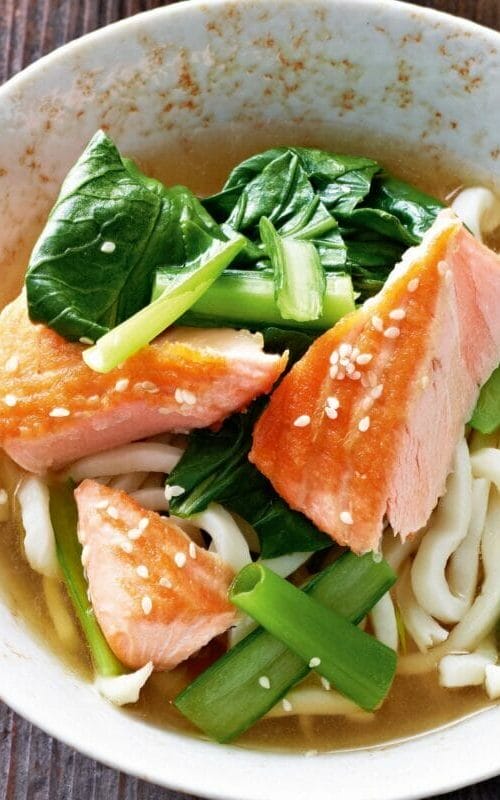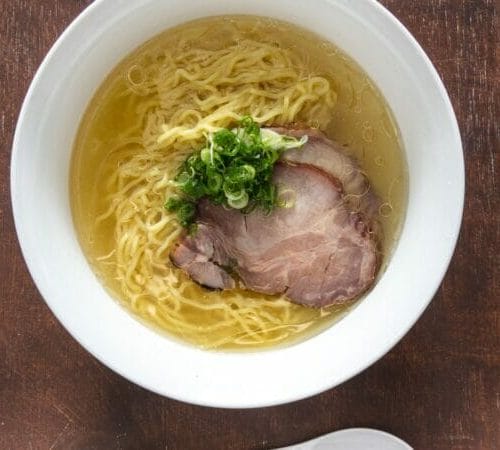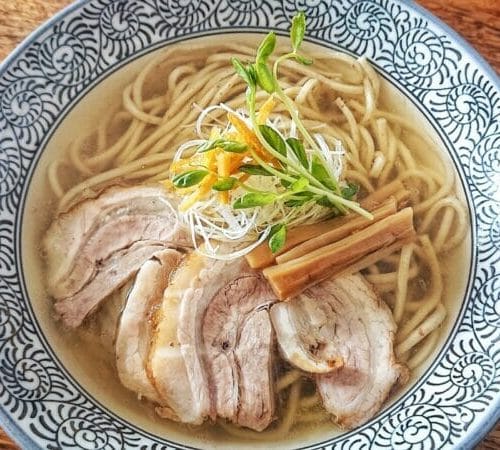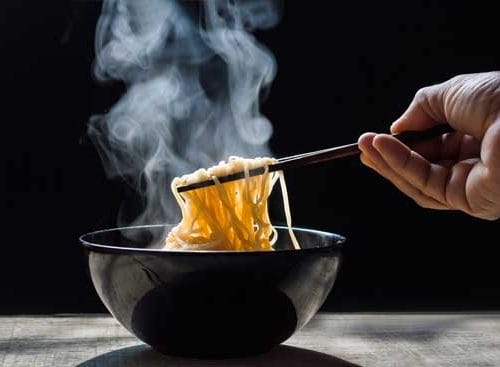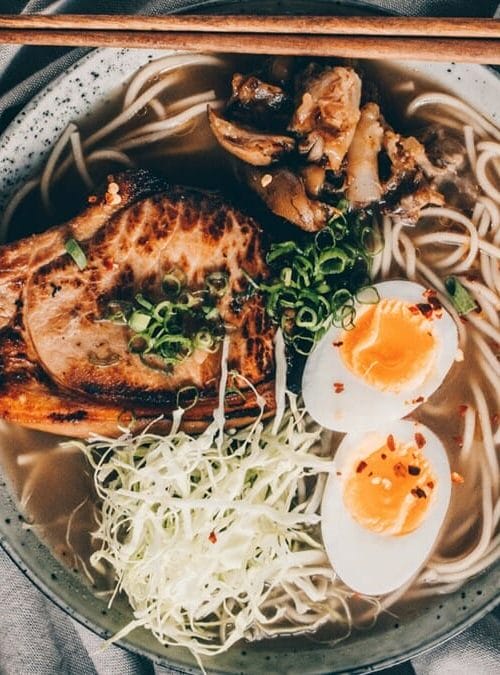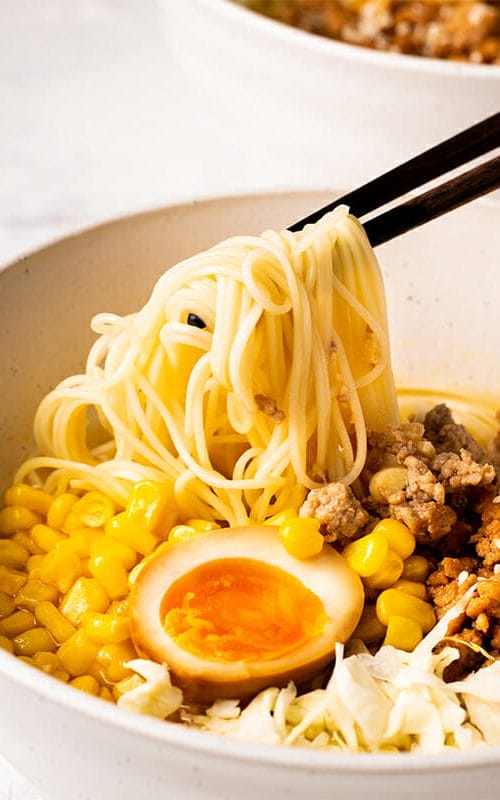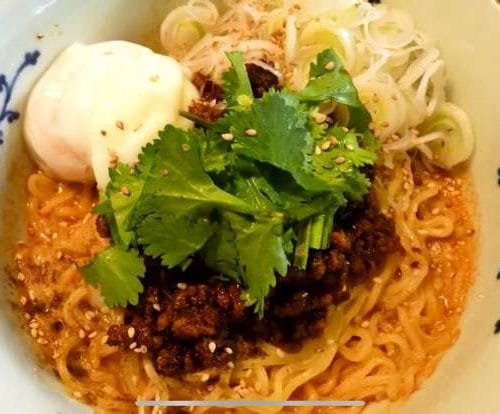Welcome to a culinary journey that promises to warm your soul and tantalize your taste buds! I’m James Anderson, and today, I’m thrilled to share with you an exquisite collection of over 30 best ramen recipes that have captivated my heart and inspired my kitchen adventures at Food And Meal.
I’ve always been fascinated by the depth and complexity of flavors that can be achieved through simple, yet precise cooking techniques. This fascination is what led me to explore the world of ramen—a dish that, much like barbecue, is steeped in tradition and regional nuances.
Ramen isn’t just food; it’s a canvas where each ingredient plays a crucial role in creating a harmonious masterpiece. From the rich, umami-packed broths to the springy, chewy noodles and the myriad of toppings that add texture and bursts of flavor, every bowl tells a story. It’s this storytelling through food that resonates with me, as it echoes the narratives we craft with every plate served from our smoker.
The emotional connection we have with food is profound. A steaming bowl of ramen has the power to transport us to the bustling streets of Tokyo or the serene countryside of Hokkaido. It’s comfort in a bowl, a remedy for the weary, and a celebration of life’s simple pleasures. Crafting these recipes has been a labor of love, a challenge that has pushed me to unexpected directions in the kitchen, and a joyous exploration of a cuisine that, while different from my barbecue roots, shares the same dedication to flavor and quality.
In this article, I invite you to join me on a gastronomic adventure that will introduce you to the most popular ramen varieties in Japan—Shoyu, Miso, Shio, and Tonkotsu—each with its own unique character and allure. We’ll dive into regional specialties and discover how to create that perfect bowl of ramen right in your own home. Whether you’re a seasoned ramen enthusiast or a curious foodie looking to expand your culinary repertoire, these recipes are designed to inspire and guide you through the delightful complexities of Authentic Japanese ramen.
So, grab your chopsticks and ready your senses. We’re about to embark on a delicious quest to uncover the secrets behind Japan’s beloved noodle soup. Let’s savor every sip and slurp together!
Best Ramen Recipes
What is Ramen?
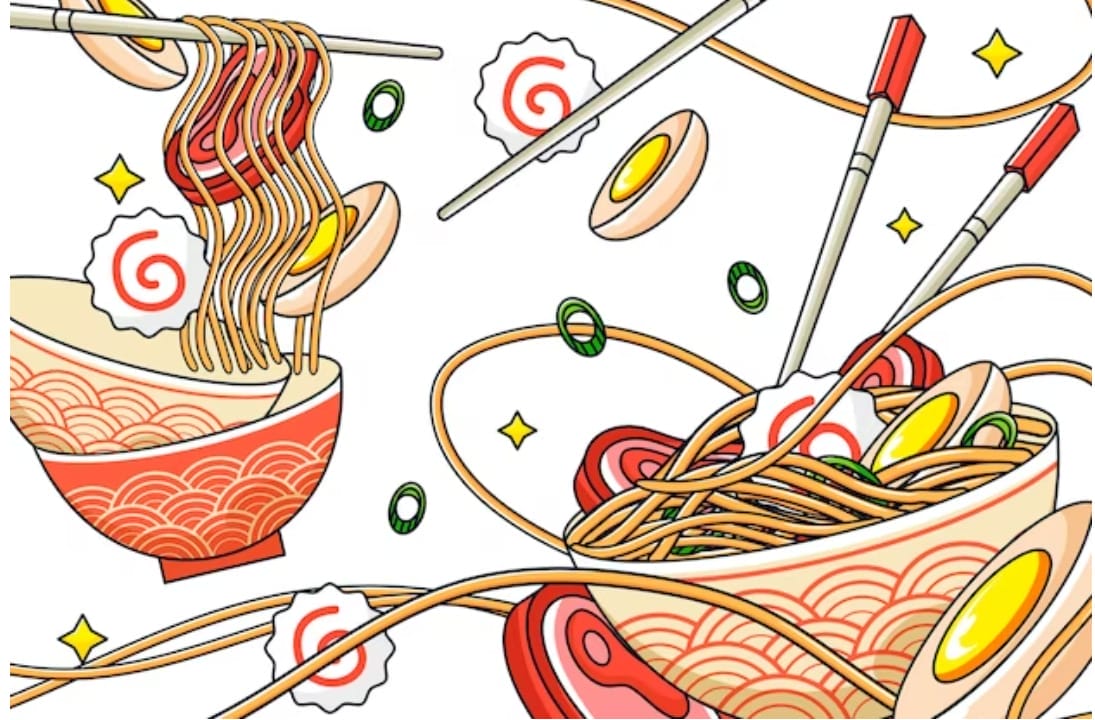
Ramen, a dish that has transcended its humble origins to become a global culinary sensation, is much more than just a simple noodle soup. It’s a Japanese delicacy with deep Chinese roots, a warm embrace in a bowl that has captured the hearts and palates of food enthusiasts everywhere.
At its core, ramen consists of Chinese-style wheat noodles swimming in a savory broth, often flavored with soy sauce or miso. The dish is then adorned with a variety of toppings such as succulent slices of chāshū (pork), crisp nori (dried seaweed), tender menma (bamboo shoots), and fresh scallions. Each element of ramen is a testament to the craft of its preparation, from the springy noodles to the rich, umami-packed broth that takes hours, sometimes days, to perfect.
The beauty of ramen lies in its versatility. There are countless regional variations, each with its own identity and flavor profile. From the creamy, pork bone-based tonkotsu ramen of Kyushu to the robust, miso-infused bowls of Hokkaido, every region adds its signature touch to this culinary canvas. Ramen shops, or ramen-ya, are temples dedicated to the art of noodle soup, where chefs pour their passion into every bowl.
But ramen is more than just food; it’s an experience, a comfort, a memory. It’s the warmth that spreads through you on a cold, rainy day, the satisfaction of a hearty meal after long hours of work or study. For college students, it’s a budget-friendly staple, a blank slate that can be transformed with whatever ingredients are at hand. For others, it’s a dish that evokes nostalgia, a reminder of home, or a first date where “Do you want to eat some ramen before you go?” might have been a playful invitation to something more.
Despite its widespread adoration, ramen isn’t without its critics. Some find the broth too salty or the toppings too limited. Yet, for every detractor, there are countless devotees who find solace in its complex flavors and textures. Ramen has an emotional resonance that few dishes can match. It’s not just food; it’s a feeling, a moment of joy, a bowl of happiness.
In essence, ramen is a cultural icon, a symbol of Japan’s gastronomic ingenuity. It’s a dish that has inspired countless iterations and fostered a community of ramen lovers around the world. Whether it’s the traditional sit-down experience in a bustling ramen-ya or the convenience of instant ramen, this dish continues to evolve, yet always remains true to its soul-warming, comforting essence.
What Are Different Types of Ramen?
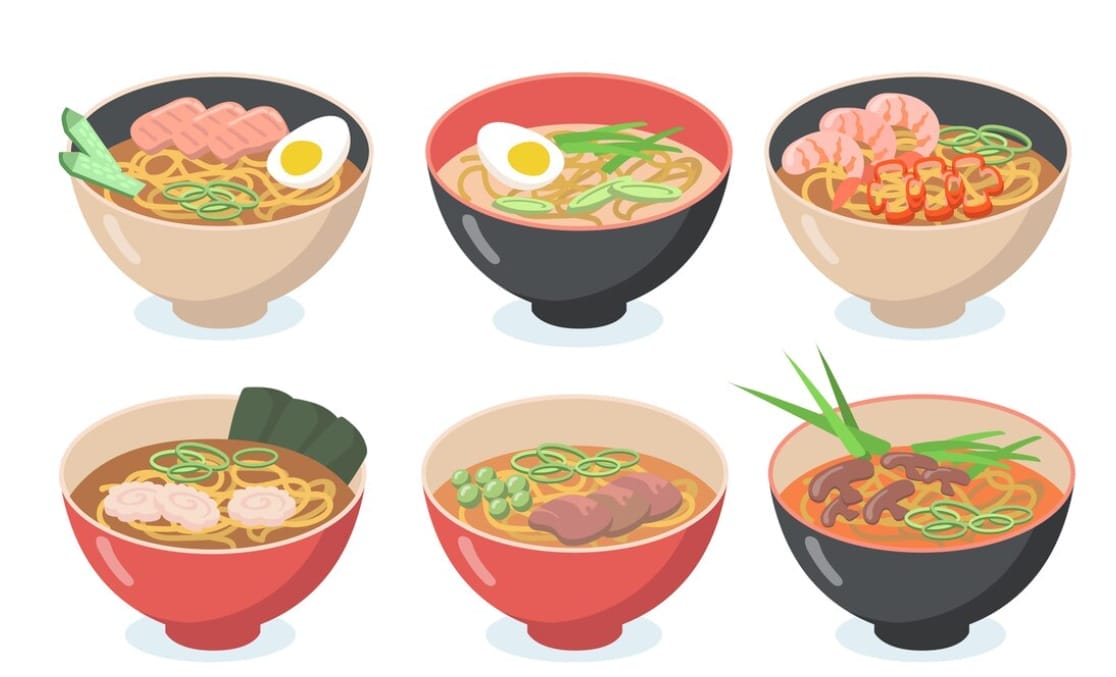
Ramen, a dish that has transcended its humble origins to become a global culinary sensation, is as diverse as it is delicious. The mere mention of ramen conjures up images of steaming bowls filled with rich broths and springy noodles, a comfort food that warms the soul and delights the senses.
At the heart of ramen’s allure are the four main types that define this noodle soup: shio, shoyu, miso, and tonkotsu. Each type offers a unique experience, a symphony of flavors that can transport you to the bustling streets of Tokyo or the snowy landscapes of Hokkaido with just a spoonful.
- Shio ramen, with its light and transparent broth, is the epitome of simplicity. It’s like the first snowfall of winter—pure and untouched. The salt-based seasoning allows the subtle flavors of chicken or seafood to shine through, creating a delicate balance that’s both refreshing and satisfying.
- Shoyu ramen, on the other hand, is bold and assertive. The soy sauce-infused broth carries a depth of flavor that’s both comforting and familiar, reminiscent of a cherished family recipe passed down through generations. It’s the kind of meal that feels like a warm hug from an old friend, inviting and full of nostalgia.
- Miso ramen is a robust and hearty affair. Originating from the northern island of Hokkaido, it’s a dish that stands up to the coldest of climates with its rich, savory broth. The miso paste imparts an umami-packed punch that’s as invigorating as it is satisfying. It’s the culinary equivalent of sitting by a roaring fire, wrapped in a cozy blanket while the world outside freezes.
- Tonkotsu ramen is a masterpiece of patience and technique. The pork bone broth, simmered for hours until it reaches a creamy consistency, is a testament to the dedication behind ramen craftsmanship. It’s unapologetically indulgent, a luxurious treat that envelops your palate with its velvety richness.
But ramen isn’t just about the broth; it’s also about the dance of toppings that adorn each bowl. From the tender slices of chashu to the vibrant green of the scallions, every element adds a layer of complexity and texture. The soft-boiled egg, with its gooey yolk, acts as a rich sauce, further enhancing the flavors. And let’s not forget the noodles themselves—whether thick or thin, curly or straight, they’re the backbone of the dish, each strand perfectly capturing the essence of the broth.
Beyond these classic types, regional varieties add their own local flair. Sapporo’s miso ramen with corn and butter, Tokyo’s curly noodles in a chicken broth, and Hakata’s ultra-thin noodles in a rich tonkotsu broth are just a few examples of how diverse this dish can be. Each region tells its own story through its version of ramen, inviting you to explore the vast culinary landscape of Japan one slurp at a time.
What to.add.to.ramen

Appetizers:
- Begin your meal with a delicate appetizer like the Sashimi – Sliced Raw Fish, offering a clean and fresh start. The subtle flavors of the fish will not overpower the main dish.
- Alternatively, Tofu Hiyayakko, chilled silken tofu topped with ginger and scallions, can provide a refreshing contrast to the warm soup that follows.
Side Dishes:
- Consider Grilled Sea Bream, its flaky texture and smoky flavor will complement the savory notes of the ramen broth.
- BBQ Prawns in Honey Mustard Sauce can add a sweet and tangy dimension that contrasts beautifully with the umami depth of the ramen.
Salads:
- A Mesclun and Artichoke Salad dressed in a light vinaigrette can cleanse the palate between sips of the rich broth.
- A Japanese Cabbage Salad, perhaps with a sesame dressing, offers a crunchy and tangy accompaniment that cuts through the ramen’s complexity.
Breads:
- While unconventional, Garlic Cheese Ciabatta could be a delightful addition for those who crave a European twist. Its crispy crust and aromatic flavor can be a satisfying contrast.
- Grilled Chili Cheese Toast might be another bold choice, adding a spicy kick that stands up to the hearty ramen.
Drinks:
- A warm Sake Hot Pot can enhance the flavors of the ramen with its subtle sweetness and warming properties.
- Japanese Green Tea is the perfect non-alcoholic option, its bitterness balancing the richness of the ramen broth.
Desserts:
- Conclude your meal on a sweet note with Daifuku – Mochi with Sweet Bean Filling, a soft and chewy treat that gently satisfies the sweet tooth without being overly heavy.
- Chocolate Macarons, with their crisp shells and creamy centers, offer a luxurious finish that complements the complexity of the ramen.
So, What to.add.to.ramen ? When curating your menu, aim for harmony and balance, allowing each dish to shine without overshadowing the star of the show – the ramen. Each bite and sip should be a step along a delightful journey, culminating in a satisfying and memorable dining experience.
Favorite Products For Eating Ramen
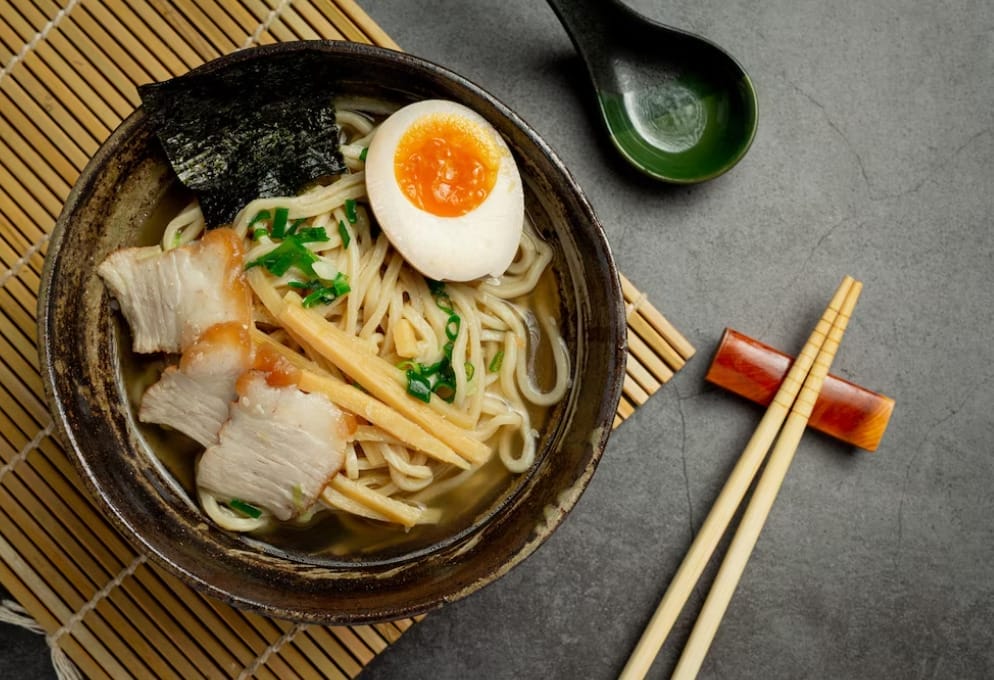
Ramen, a dish that has transcended its humble origins to become a global culinary phenomenon, is not just about the noodles or the broth; it’s an experience. The ritual of preparing and savoring a bowl of ramen can be as comforting as the dish itself, and having the right products can elevate this experience to new heights.
The most popular type of ramen, Shoyu, with its soy sauce-infused clear-brown broth, has been warming bellies since its invention in Tokyo in 1910. It’s a testament to the enduring appeal of this simple yet satisfying meal. But what truly makes a ramen feast complete are the accompaniments and tools that enhance the enjoyment of every slurp.
When it comes to sides, the options are endless. From the crunch of Egg Rolls to the savory delight of Chicken Dumplings, each side dish adds its own texture and flavor to complement the main attraction. Imagine the crispy bite of Fried Rice or the soft, pillowy goodness of Bok Choy, each bringing a unique sensory pleasure to the table.
But let’s not forget the importance of toppings. A handful of wilted spinach or some chopped cabbage can transform a bowl of ramen into a vibrant tapestry of color and nutrition. The addition of these green veggies not only boosts the health quotient but also adds a delightful contrast to the soft noodles and rich broth.
Now, onto the utensils. While some may argue for the convenience of a fork, traditionalists will insist on chopsticks as a sign of respect for the Japanese tradition and the chef’s craft. The Chirirenge, a deep soup spoon with a flat bottom, is perfect for scooping up the flavorful broth, ensuring you savor every last drop.
For those who seek innovation, the Ramen Spoon + Fork, designed by Masami Takahashi, is a modern marvel. This stainless steel hybrid utensil, available for $14, is a testament to ingenuity, allowing ramen lovers to twist noodles and scoop broth with equal ease. It’s a simple yet brilliant solution to the age-old dilemma of how to tackle both elements of ramen without switching between tools.
Emotionally, there’s something deeply satisfying about having the perfect set of tools to enjoy your ramen. It’s like a warm hug for your taste buds, a comfort that goes beyond the food itself. The act of twirling noodles with precision and sipping broth without spilling a drop can make the experience feel almost ceremonious.
In the end, whether you’re a purist or an innovator, the joy of eating ramen is universal. It’s a dish that can be as emotionally fulfilling as it is physically nourishing, and with the right products at hand, each bowl can be a personal expression of your ramen devotion. So, gather your favorite utensils, pick your cherished sides, and dive into the world of ramen with all your senses engaged. After all, ramen isn’t just food; it’s a lifestyle.
How do I make ramen broth from scratch? Making ramen broth from scratch involves simmering bones (typically chicken or pork) along with aromatics for several hours. The goal is to extract as much flavor as possible, creating a rich and flavorful base for the soup. A clear broth (chintan) requires careful skimming of impurities, while a milky broth (paitan) is emulsified by boiling vigorously.
Can I use store-bought noodles for homemade ramen? Yes, you can use store-bought noodles for homemade ramen. While fresh ramen noodles are preferred for their texture and flavor, dried or pre-packaged noodles can be used as a convenient alternative. It’s important to cook them according to the package instructions for the best result.
What are common toppings for ramen? Common toppings include chashu (braised pork belly), ajitama (seasoned soft-boiled egg), kamaboko (fish cake), wood ear mushrooms, bamboo shoots, green onions, and nori. The choice of toppings can vary widely and can be customized to personal taste.
Is it necessary to make my own noodles? While making your own noodles can enhance the authenticity and taste of your ramen, it’s not necessary. Homemade noodles require time and skill, as the dough must be properly kneaded, rested, and rolled out before cutting. For those seeking convenience, high-quality store-bought noodles are a suitable option.
How long does it take to prepare homemade ramen? The preparation time varies greatly depending on the complexity of the recipe and whether certain components are made from scratch. Quick versions may take 30 minutes, while more elaborate broths, particularly tonkotsu, could require over 12 hours of simmering to achieve the desired depth of flavor.
Can I make vegetarian ramen? Absolutely, vegetarian ramen is a delicious alternative, utilizing vegetable broths and umami-rich ingredients like mushrooms and seaweed to develop deep flavors. Toppings can be adapted to include a variety of vegetables, tofu, and even vegetarian versions of traditional toppings like faux meat slices.
Conclution
In conclusion, ramen is a versatile and deeply satisfying dish that embodies the richness of Japanese culinary tradition while inviting creativity and personal expression. The interplay between the chewy noodles, the umami-rich broth, the complexity of the tare, and the variety of toppings creates a harmonious bowl that can be tailored to individual tastes and preferences. Whether one sticks to the classic recipes or ventures into innovative combinations, the process of making ramen at home is as rewarding as it is delicious. It encourages cooks to explore the depths of flavor and texture, and to share their unique creations with others. Ultimately, the best ramen recipes is one that resonates with the maker’s palate and brings joy to those who experience it. As each element of ramen can be adjusted—the type of broth, the flavor of tare, the choice of noodles, and the selection of toppings—there are endless possibilities for new recipes and discoveries in every steaming bowl.




